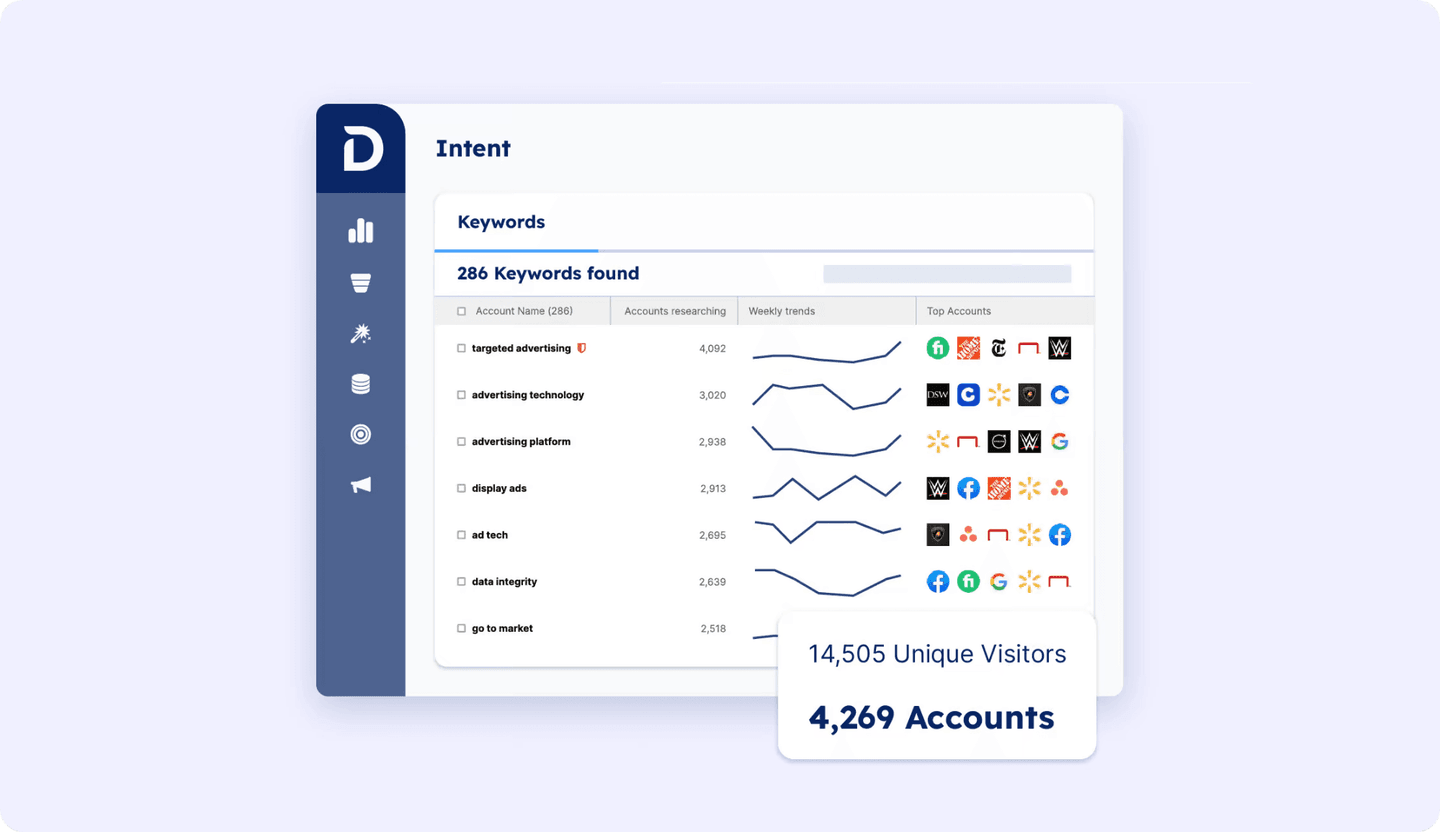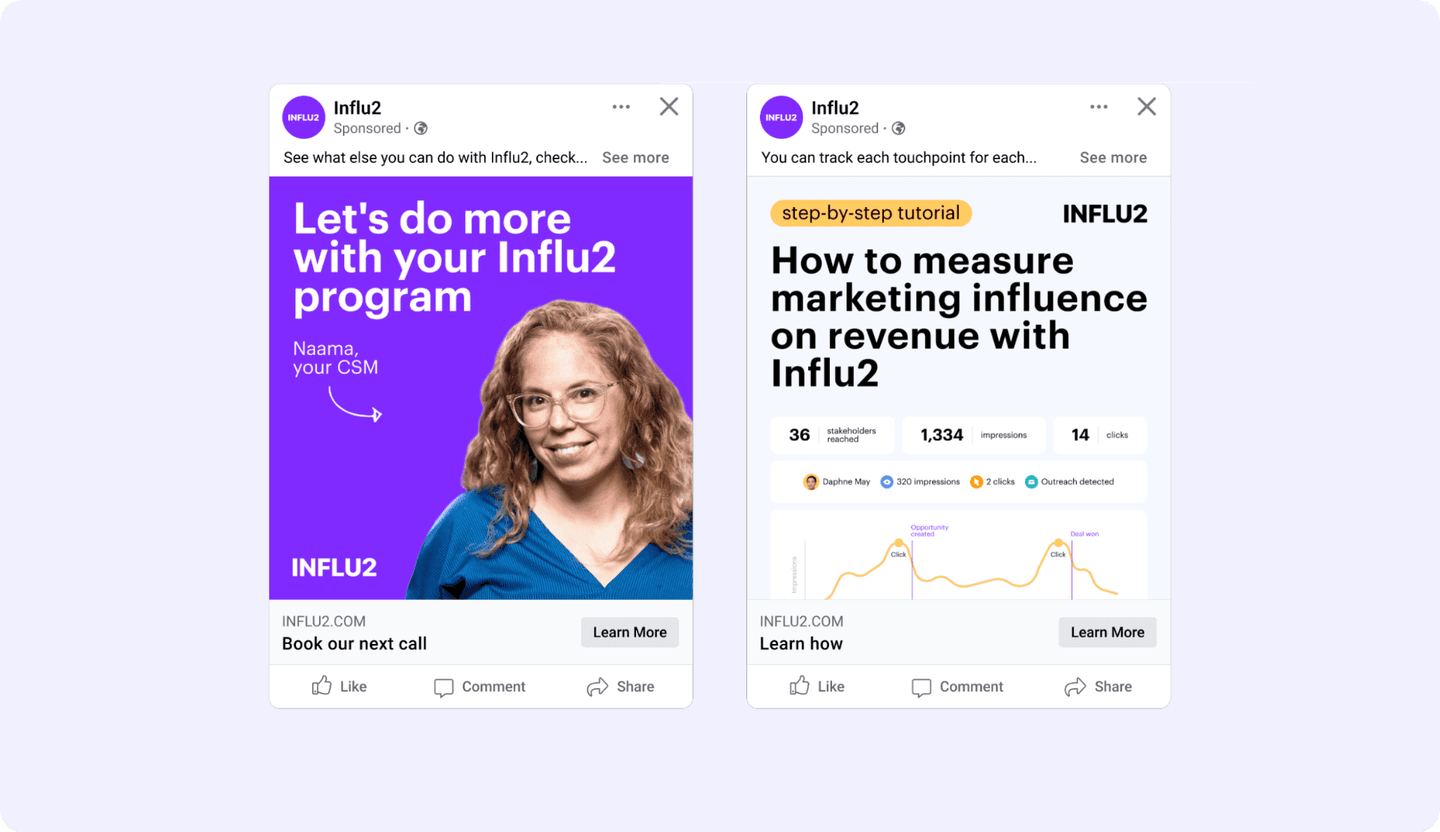What Demandbase Intent Data Gets Right (And Where it Falls Short)
You’ve got a secret admirer. Someone who thinks you’re really cool, and wants to get to know you better.
They keep checking your website, researching keywords related to your brand, and even reading your content.
But all those little hints? They’re signed “anonymous.”
An ABM platform like Demandbase is a tool you can use to unmask your secret admirers and talk to them.
Aside from being an overall account intelligence and GTM tool, Demandbase gives you intent data based on the web activity of your target accounts.
Of course, knowing about an account is great—but it’s only a first step. You still need to discover who within that account is interested.
Let’s talk about what you can get from using Demandbase intent data, and how you can complement this with an even deeper understanding of your target audience.
How Demandbase collects and gives you intent data
Demandbase collects intent signals from three primary places:
- First-party behavior on your own website and in your CRM. This could include page views, form fills, content downloads, and other activity.
- Third-party intent data from its data partners and bidstream data from B2B publications (including Forbes, Fortune, Fast Company, and others).
- Integrated intent data from other tools, such as Bombora, G2, TrustRadius, and more.
This means you can see which accounts are engaging on your site, while also seeing what keywords they’re researching, where they’re looking for information, and what they’re interested in across the web.
To use it, add your relevant keywords and Demandbase’s mix of AI and natural language processing will look for the right context, find the highest-quality keywords with strong intent, and show you which accounts are engaging with those keywords.
Once that’s done, you can see a list of accounts with high engagement activity in your relevant keywords, or look at a list of keywords to see which accounts were researching the highest-intent terms.

Where Demandbase intent data falls short
Most users love Demandbase’s tool as a whole, but here are three things people consistently complain about when it comes to their intent data.
Intent data is missing contact-level information
The biggest gap? Intent data only goes as deep as the account. It doesn’t show each prospect’s name and title, so you don’t get intent data at the contact level.
The amount of data is overwhelming
While Demandbase gives you a lot of information, there’s very little direction out of the box on how to use this data in your workflows, which can be overwhelming for some users.
Getting started is slow
Also, remember that a tool as big as Demandbase takes a long time to learn and get value from. In fact, data from real user reviews shows that it takes about two months to implement the tool into your workflow, plus the time it takes for your team to start using it regularly.
From setting up campaigns to creating lists and setting up dashboards, it’s not a tool you can get started with right away without Demandbase’s support team.
In some cases, you may need external help to get the tool set up.
How do ABM teams use Demandbase intent data? (+ where they could do more)
Let’s talk about three ways ABM teams typically put Demandbase intent data to work—and where a contact-level layer (like Influ2) can help close the gaps:
Discover net-new accounts and build a list of contacts
Teams use Demandbase to:
- Build account lists using ICP criteria (like firmographics and technographics) combined with relevant keyword searches.
- Overlay that third-party data with first-party data to identify the accounts that are searching your website.
- Get a consistent stream of new accounts that may be showing some signs of intent.
Once you have a list of new accounts, you can also use Demandbase to collect contact information for all the roles and titles that match your ideal customer within those accounts.
Here’s the opportunity: Use Demandbase to uncover target accounts, and use Influ2 ads to engage specific contacts in those accounts.
To see intent data in Demandbase, you need to wait until someone researches your category or industry. And even though Demandbase can give you a list of contacts inside those engaged accounts, your sales team will still need to reach out to every contact to find out who’s actually interested.
But once you have that list, you can pass it through your CRM into Influ2, and serve contact-level ads to the buying group members at your target accounts.
With contact-level ad campaigns, you can get direct, first-party intent signals from the people you’re actively trying to convert. This tells Sales exactly who the intent signal came from, what they engaged with, and when, meaning their outreach can be even more relevant and timely.
Best of all, you don’t need to wait until an account is researching your company: you can also use contact-level ads to build awareness within target accounts that may not have heard of you yet.

Prioritize accounts for outreach
Teams using Demandbase can:
- Use the intent data lists to see companies with high engagement on certain keywords.
- Set up a predictive model with Demandbase’s machine learning tools to automate account selection.
- Push top accounts into sales sequences or target them with IP-based ads.
Here’s the opportunity: IP-based ads hit everyone at the account, not just the buying group. Influ2 lets you layer in contact-level intent, meaning you specify who you want to reach, and those people will be marked as priority when they click your ads. That way, your reps spend time on warm prospects, not noise.
Identify customer accounts that may be about to churn
Customer Success teams using Demandbase can:
- Monitor customer accounts for drop-offs in engagement or search intent for competitors.
- Flag customers actively searching for competitive keywords, and restart the conversation.
Here’s the opportunity: Knowing an account’s usage has dipped or that they’re researching a competitor is useful. But once you have that information, you can use Influ2 to re-engage specific champions or power users within at-risk accounts. Use ads that help them see your product’s value, or invite them to a training session with their CSM. Then, you can surface individuals who engage so your CS team knows exactly who might be at risk or ready to expand.

The differences between Demandbase and Influ2 intent data
At its core, Demandbase is an ABM platform. It’s built to give you account-level intent signals—flagging which companies are researching your keywords, visiting your site, or consuming relevant content across the internet.
Influ2 is built for contact-level ABM.
With Influ2, you can get many of the same signals Demandbase provides, but at the contact-level (i.e. you see exactly who signals come from) and target those same people with ads.
Here’s a quick list of the biggest differences between Demandbase and Influ2’s intent data:
| Criteria | Demandbase | Influ2 |
| Scope of the data | Tracks intent at the company level: aggregates signals from monitored sites and keywords across the web. | Captures intent at the contact level across search, social, and third-party content. |
| Granularity | Shows that “Acme Inc.” searched for “workflow automation,” but not who within Acme actually searched. | Shows that “Jane Doe, VP of Ops” clicked on your “workflow automation” ad today. |
| Proactive vs reactive | Reactive: You need to wait for buyers to search for your topic or brand on monitored sites. | Proactive: You choose who to advertise to (pulled from your CRM), then create intent signals by serving contact-level ads. |
| Place in the funnel | Works best early in the buying journey to generate pipeline and sift through large lists to find active accounts. | Can be used throughout the buying journey, from warming up cold contacts with ads, to nudging decision-makers during negotiation, and through post-sale expansion campaigns. |
Build your intent data into your overall ABM strategy
Using intent data doesn’t mean slapping another tool into your ABM stack and hoping for the best.
As Cameron Harvey said on LinkedIn: “Many have the expectation it’s a true fish finder: toss it over to sales, and they’ll book meetings with ease. This isn’t the case. You really have to work at it.”
“Also note,” Cameron continues, “not all intent is created equally. Some of it is much higher quality, but a lot of it is poor.”
Contact-level intent signals (like what Influ2 provides) is becoming the standard because it's more actionable for Sales and Marketing.
Want to see how it works? Sign up for a demo today.
Dominique Jackson is a Content Marketer Manager at Influ2. Over the past 10 years, he has worked with startups and enterprise B2B SaaS companies to boost pipeline and revenue through strategic content initiatives.


